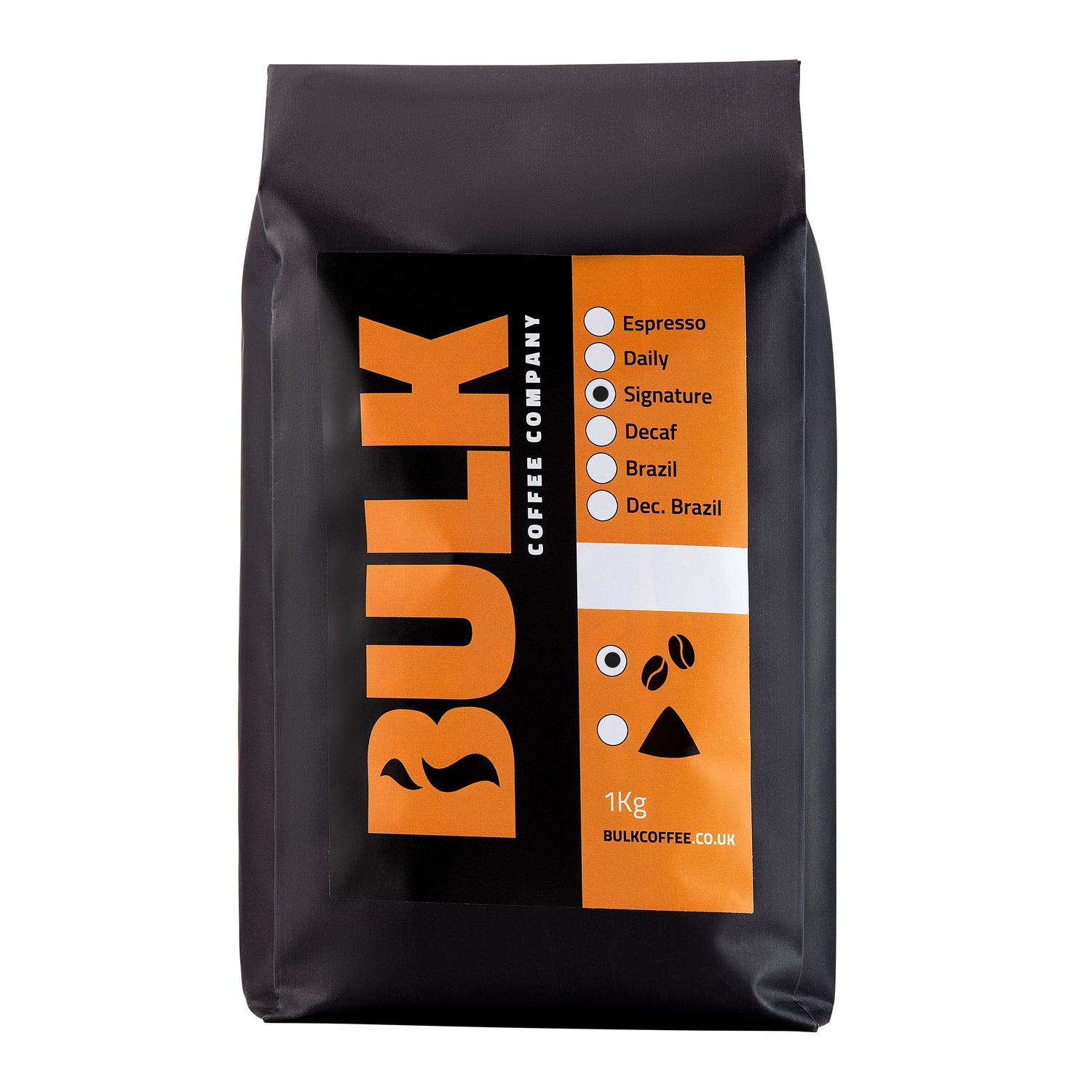
कॉफ़ी बैग को वाल्वयुक्त क्यों किया जाता है?
Share
The valves on coffee bags have one main function, to allow fresh coffee to gas off without compromising the packaging.
When coffee is roasted, hundreds of physical and chemical reactions take place, and a by-product of these reactions is CO2. As the beans rest, they do what's called "gas off", and release large amounts of the earlier mentioned CO2 over the upcoming days and weeks. If the coffee is then packed into a bag without a valve, they can inflate, and sometimes even explode due to the pressure created. By introducing a one-way valve into the packaging, it allows the coffee to remain in a protective atmosphere, whilst eliminating the risk of the bag popping.
Another benefit of using a valved coffee bag, is the ability to be able to smell the coffee inside without having to open the bag. From a consumers point of view, it's as close to "try before you buy" as you can get, without getting in trouble with your local supermarket. Providing the bag isn't vacuum sealed, you should be able to gently squeeze the bag, and smell the coffee aroma through the valve.
If the coffee you're purchasing isn't in a valved bag, it generally means it isn't as fresh as you'd hope. Some roasters will let their coffee rest in separate containers for days, and sometimes even weeks to gas off, before then packing them into their final packaging. The problem with this is that the coffee is normally exposed to circulating air, which speeds up the process of the beans going stale.
To summarise, fresh coffee will always have valved packaging, whilst having an "inflated" bag of coffee isn't such a bad thing after all.

